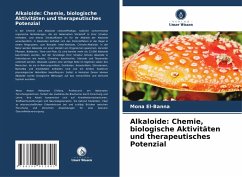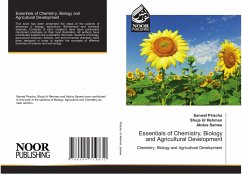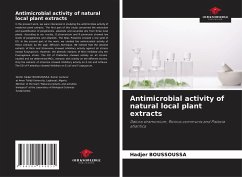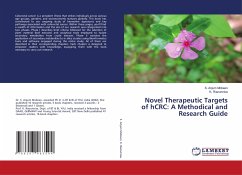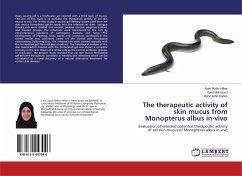
Alkaloids: Chemistry, Biological Activities, and Therapeutic Potential
Versandkostenfrei!
Versandfertig in 6-10 Tagen
34,99 €
inkl. MwSt.

PAYBACK Punkte
17 °P sammeln!
In chemistry, Alkaloids are nitrogen containing natural occurring organic compounds which contains a heteroatom Nitrogen in their structure and these, nitrogen atom is responsible for the alkalinity of Alkaloids. In alkaloids, these, nitrogen atom is usually situated in the ring system, For example: Indole alkaloids, Quinoline alkaloids. In nature, Alkaloids are derived by the large variety of organisms including- plants, bacteria, animals, fungi. There are more than 12,000 alkaloids have been already described. On the basis of structure, alkaloids can be divided into sub-classes like indoles,...
In chemistry, Alkaloids are nitrogen containing natural occurring organic compounds which contains a heteroatom Nitrogen in their structure and these, nitrogen atom is responsible for the alkalinity of Alkaloids. In alkaloids, these, nitrogen atom is usually situated in the ring system, For example: Indole alkaloids, Quinoline alkaloids. In nature, Alkaloids are derived by the large variety of organisms including- plants, bacteria, animals, fungi. There are more than 12,000 alkaloids have been already described. On the basis of structure, alkaloids can be divided into sub-classes like indoles, quinolines, iso-quinolines, steroids and terpenoids alkaloids. Alkaloids are mainly classified in two major classes- on the basis of origin and presence of nitrogen atom and on the basis of ring structure.Alkaloids play a significant role in daily human life, being present in food, beverages, medicinal drugs, stimulants, narcotics, and insecticides, and influencing a wide range of physiological activities. Even in minute doses, alkaloids can exert potent biological effects on both human and animal systems.



